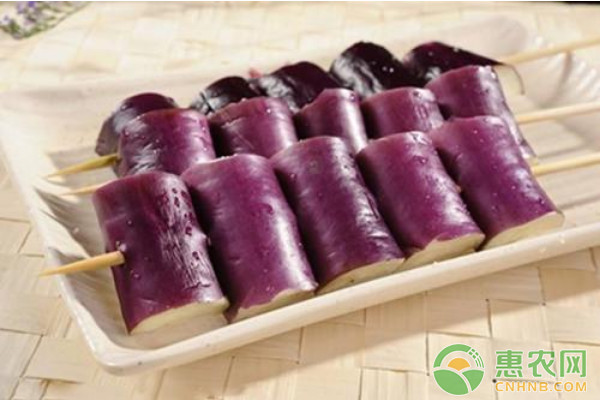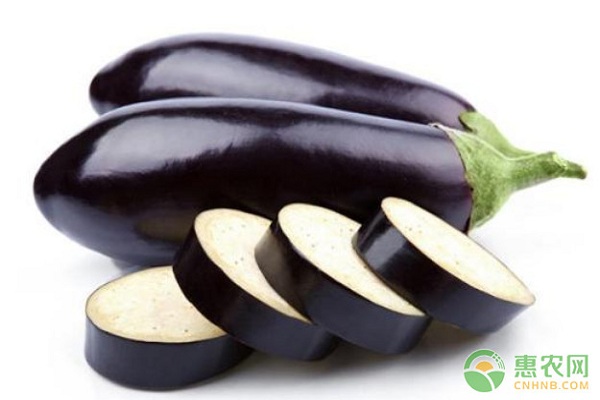Main points of regeneration and efficient cultivation management techniques for eggplant over summer
Many farmers' friends know that the regeneration of eggplants in summer can be traced to the end, that is, from the beginning of April to the beginning of May, the eggplant is supplied until the first frost. Not only improve the land utilization rate, but also make the eggplant high-yield and efficient. How to cultivate the summer eggplant, learn together. I. Regeneration cultivation and its advantages 1 eggplant regeneration cultivation Eggplant regenerative cultivation refers to a cultivation technique in which the senescent plants entering the end of harvesting are cut off from the upper branches to promote the germination of new branches and flowering results. In this way, the eggplant we planted in February this year, after severe cold, smashed the heat, and ate two eggs. 2 Advantages of eggplant regeneration cultivation Generally, the eggplants are rooted after harvesting, and we leave these old eggplants carefully to serve because the regenerative cultivation saves time, labor and economic costs compared to replanting an eggplant. In addition, the summer regenerative cultivation of eggplant can also solve the problem of summer seedling difficulties. The supply period is from early May to late July, and from mid-September to late November, an additional off-season supply is added. Under the organic planting standard, 5833 kg of first-class products are produced per mu (the yield is only about 3811 kg), and high yield and high efficiency are obvious. 3 Regeneration conditions Regeneration cultivation is of great enthusiasm, but it is still necessary to see whether the eggplant in the field is qualified, to become a warrior in the field: 1. Strong and strong. The cultivation and management of old eggplant strains is directly related to the continuous growth and yield of eggplant. Therefore, it is necessary to cultivate strong seedlings, scientifically manage fertilizer and water, comprehensively control pests and diseases, completely remove diseased plants, insect strains, and weak strains, and select high-quality old plants. 2. The lineage is good. In the selection of varieties, we should choose strong varieties with strong growth ability, strong resistance, and good commercial quality. Such as: Su long eggplant, Suqi eggplant, Beijing seven leaf eggplant, etc., it is best to use the red eggplant or Torumbamu as the rootstock for graft cultivation, which can further enhance the resistance of the variety. We chose Rexam's gargar Angela this year. The garden Fengbao (Vietnamese) selected in previous years also enjoyed a bumper harvest, while Jingjiao No.6 and Jingjiao No.18 (wintering) suffered from serious pests and diseases. end. Second, eggplant regeneration cultivation management 1 pruning In the middle and late July, the shed was so hot and humid that the harvest was in the final stage, and the branches were vigorous but flashy. Choose a sunny morning and pruning. At this time, it is in the rainy season. In order to prevent the water from being rotted by the cut, the cut should be inclined at about 45 degrees. Conventional planting uses agricultural streptomycin or chlorothalonil to prevent wound infection. However, we did not use a little fungicide, and the eggplant was still safe and sound, which proved that our subtraction concept would work. The height of the cut is 20 cm above the position of the eggplant, leaving a "Y" shaped stem. Remove all the side branches below the stalk. The cut leaves should be cleaned out of the shed. At this time, it is in midsummer, high temperature, and it needs to be cooled by various measures. In case of rain, the humidity inside the shed is large, and it is necessary to release the air in a timely manner to prevent the cutting mouth from rot. 2 Fertilizer management After the eggplant is pruned, it is necessary to pour a large amount of water, and the amount of water to be permeated into the soil surrounding the root system is appropriate. After watering, timely cultivating and loosening the soil to promote the plant to accelerate sprouting. The oyster eggplant grows for several months and consumes a lot of nutrients in the soil. Therefore, it is necessary to topdress after pruning. After 15 days of pruning, new branches and leaves began to germinate. At this time, the top dressing (we used 20 kg of sea bream and fertilized a bucket) to promote the growth of the branches and leaves. One year after pruning, flowering and fruit setting begins. As a result, less watering and more loosening in the early stage, especially during the flowering of the eggplant, the soil water content should not be too high, otherwise it is easy to fall and fall. When the eggplant began to blink, he applied a bucket of fermented water. After the start of harvesting, watering is applied every other week or so, and a bucket of fertilization is applied. 3 cultivating and weeding After cultivating 3 times, after the plants are pruned, in order to accelerate the occurrence of new shoots and grow new side branches, it is necessary to carry out cultivating loose soil in time. When the new branches grow, the cultivating and weeding are carried out. 4 pruning 8-10 days after pruning, axillary buds can form lateral branches, and when new shoots grow to about 10 cm, double-rod pruning is carried out. Leave two thick and growing side branches as the result branches, and the other side branches are completely erased, and the lateral buds of the base are removed in time. Hanging, forks and pan heads are equivalent to normal operations. Regeneration of cultivated eggplants due to root aging, weak nutrient absorption capacity, etc., need to promptly remove the eggplant to promote the growth of the upper tomato fruit, leaving 3 to 4 fruits per plant to ensure the quality of the single fruit, timely remove the excess fruit, deformed fruit, small Fruit and rotten fruit, while removing the leaves below the stalk. 5 pest control The oyster eggplant is mainly insects, mainly whitefly, leafhopper and thrips. Control method: (1) Physical control, clear the litter in time after pruning, reduce the number of pests left in the front, and hang the yellow and blue plates in time. (2) Biological pesticide control, biological soap and azadirachtin can be used to control whitefly, mineral oil can be used to control leafhopper, and cucurbitin can be used to control hummer. (3) Biological control, for the whitefly, the release of the small bee; for the leafhopper, the Chilean small tortoise; for the Hummer, the East Asian small flower and the new P. 6 harvesting 45 days after pruning, the regenerated eggplant reached the product maturity. Harvesting began in the first half of September. The yield of premature harvest is low. If the fruit is harvested too late, the fruit tastes poor. It can be harvested when the weight of a single fruit is about 150 grams. It increases the yield of the early stage and is conducive to the growth and development of the young fruit. Increase the full-term output. Hui Nong Network Xiaobian Tip: The batch of eggplant mentioned in the above case is the seedling of the previous winter. The key points about the technology of regenerating cultivated eggplant in summer are said today. Interested friends should continue to pay attention to our Hui Nong network! Tissue Underpads are disposable absorbent pads that are placed under a
patient to protect bedding, furniture, or other surfaces from bodily
fluids, such as urine or blood. They are made of a soft, non-woven
material that is gentle on the skin and have a waterproof backing to
prevent leaks. Tissue underpads come in a variety of sizes and
absorbency levels to meet the needs of different patients and
situations. They are commonly used in hospitals, nursing homes, and home
care settings. Tissue Underpads,Underpads For Incontinence,Medical Waterproof Incontinence Underpads,Incontinence Bed Pads With Breathable Film Honghu Danielle Sanitary Material Co., Ltd. , https://www.daniellecn.com

